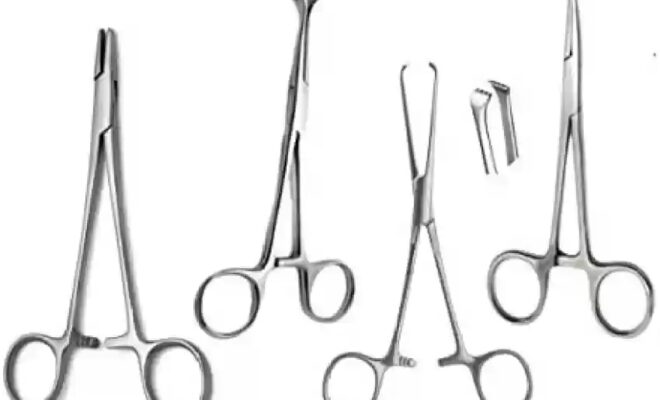Enlisting Different Types of Surgical Forceps

Surgical forceps are used in every hospital and healthcare facility to perform routine surgical procedures. Their all-purpose nature makes it hassle-free for surgeons to use them on their patients. In surgeries, debakey forceps help hold and manipulate soft tissues, blood vessels, and other delicate body parts without harming them. Moreover, many surgeons use forceps to clamp, tweeze, and apply pressure to soft body tissues. Several variations of forceps are available, varying in functioning and significance in regular surgeries. This article enlists different types of surgical forceps.
Tweezer Style Forceps
These forceps look like tweezers and work on a spring mechanism. Using these forceps, surgeons can easily hold and carry different sizes and shapes of tissues and stitching threads. Here are different types of tweezer-style forceps:
- Dressing Forceps
Dressing forceps are used when treating alarming situations occurred due to accidents. These forceps help surgeons place the adhesive wound stripes and corresponding gauze on the wounded area. In addition, dressing forceps also allow cleaning of the debris and ripped tissues from the wound site and manoeuvre the needle to close the wound quickly.
- Splinter Forceps
Splinter forceps are equipped with a high-quality magnifying glass. They enlarge the operative area for the surgeons allowing them easy access to the restricted and dull areas.
- Tissue Forceps
Tissue forceps are designed to meticulously hold the flimsy tissues and skin layers during the surgery. It’s crucial for skilful surgery to hold up tissues with utmost care using tissue forceps. For instance, tissue forceps like debakey forceps are often used in cardiovascular surgeries to hold soft tissues without harming them.
Obstetric Forceps
Obstetric forceps are used during challenging surgeries like childbirth to ensure the baby’s safety throughout the procedure. These tong-like forceps make it feasible for gynaecologists to perform the crowing process. Even mothers and midwives have been using these forceps for successful childbirths at home.
Thumb Forceps
Thumb forceps function on a spring mechanism that gives power to the forceps to hold and release the soft tissues without puncturing or rupturing them. When it comes to thumb forceps, surgeons mostly prefer using debakey forceps. The blades of these forceps consist of two flat pieces of metal connected to one end allowing the blades to pint away slightly from one another in a narrow A-shape. When a surgeon uses his thumbs to squeeze the blades together, they create a spring tension, allowing the forceps’ tips to have a firm grip on sensitive tissues.
Ring Forceps
Ring forceps are scissors-looking forceps featuring arched and rounded handles. These surgical tools aim to help surgeons grab the fragile structures tightly and not let them slide through the blades. Many different types of ring forceps are mosquito forceps that are compact in size and towel forceps that are used to keep the towels or other surgical clothes in a fixed position for soaking blood.
Conclusion
The function of different types of forceps can’t be disregarded in any general surgery or operating room. These are important medical tools as they help grasp and hold delicate tissues and other instruments during surgeries. Always buy sterilized surgical forceps from a reputable and reliable vendor.








